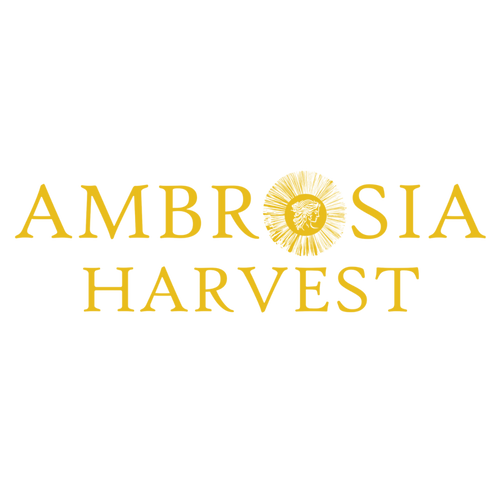Functional Mushrooms 101: Simple, Potent, and Surprisingly Practical

You’ve seen the buzz: mushroom coffee, mushroom tinctures, mushroom everything. Trendy? Sure. But functional mushrooms have been part of Traditional Chinese Medicine and Indigenous practices for thousands of years. At Ambrosia, we keep it simple: functional mushrooms are edible mushrooms with benefits beyond basic nutrition—think steady energy, calmer nerves, clearer focus. In other words, food that supports how you function.
Not “That Kind” of Mushroom
Let’s clear the biggest myth first: functional mushrooms are not psychedelic. No trippy visuals here. Some species (like Reishi or Lion’s Mane) can feel calming or mentally bright, especially at higher doses, but that’s not the same as hallucinogenic effects. Expect “ahh,” not “whoa.”
How They Actually Help
Different mushrooms contain different compounds, and that’s where the magic (the real kind) lives:
-
Beta-glucans (found across functional species) help modulate the immune system—think more tuned than amped.
-
Lion’s Mane contains hericenones and erinacines—compounds being studied for how they support nerve growth factor (NGF) and healthy neural connections. Translation: brain support you can feel as focus or recall.
-
Turkey Tail is rich in beta-glucans that activate Natural Killer (NK) cells—your body’s “seek and respond” team—under active study for immune support.
Big picture: functional mushrooms are adaptogens—they nudge your system toward balance. Because your baseline is unique, your results will be, too.
Ambrosia stance: We see functional mushrooms as preventative, supportive foods—not pharmaceuticals. We share the science, skip the hype, and always recommend checking with your clinician if you’re pregnant, breastfeeding, managing allergies, or taking medications.
Which Ones Do People Love Most?
“Popular” depends on the crowd:
-
In long-standing traditions, Reishi, Cordyceps, and Chaga are staple supports.
-
In the West (and on social), Lion’s Mane gets the spotlight for cognitive clarity.
-
In our conversations, folks often start with Lion’s Mane and then add Reishi (stress/sleep) or Chaga (daily resilience).
If you’re new, you can take our quiz—but honestly, we love real conversations. Tell us what you’re feeling and what you want to feel more (or less) of, and we’ll point you to a starting place.
What You Might Notice First
Sensitivity varies. Some people feel a shift within hours (steadier energy, less background pain). Others notice the pattern more than the moment: sleeping through the night, calmer reactivity, fewer afternoon crashes.
A simple test we like:
-
Take your extract daily for two weeks.
-
Pause for two days.
-
Notice what changes. Sometimes the difference is clearer in the absence.
Daily Ritual vs. “As Needed”
You can use mushrooms reactively, but consistency wins. Like Vitamin C, your body benefits most when levels are topped off. We suggest a daily ritual—add to coffee or tea, or take straight from the dropper.
Powders, Capsules, or Tinctures—What’s the Difference?
Short version:
-
Powders: extract infused back into dried material, then dehydrated. Must be digested first, so speed and bioavailability depend on your gut.
-
Capsules: powder, but convenient. Same digestion caveat.
-
Liquid extracts (tinctures): absorbed quickly through the stomach lining for faster uptake.
Why Ambrosia Uses Dual Extraction
Mushroom cell walls are tough (chitin!). We break them open with sound waves and heat, then extract with water and alcohol to capture both water-soluble and alcohol-soluble compounds. We then distill off the alcohol and finish in organic vegetable glycerin—great bioavailability, kid- and pet-friendly, and it tastes… actually good. No fillers. Just fruiting bodies + distilled water + organic glycerin.
Quality Checklist (So You Don’t Waste Money)
When you’re comparing brands, look for:
-
Fruiting Bodies (clearly stated). Mycelium can be useful too, but potency often lives in the fruiting body. If a product claims “full spectrum,” look for transparency about the ratio of mycelium to fruiting bodies
-
Transparent Methods (what was extracted and how). If they can’t explain it simply, be cautious.
-
Extraction Ratios (with context). Example: our Lion’s Mane starts at 10:1 (10 lbs fresh → 1 lb dried), then we craft the final extract at 1:4. That means every 1 mL serving ≈ 250 mg equivalent of mushroom material.
-
Third-Party Testing (on the finished extract, not just raw material). Results can be technical, but brands should help you understand them.
Safety Notes (The Sensible Stuff)
Functional mushrooms are generally safe. Still:
-
Skip if you have mushroom allergies.
-
If you’re pregnant/breastfeeding or on medications, talk to your clinician first.
-
Our glycerin-based extracts are designed to be friendly for kids, pets, and folks avoiding alcohol.
Bring It Into Your Day (Zero Friction Ideas)
-
1 mL straight from the dropper after brushing your teeth.
-
In your morning coffee (Lion’s Mane) or evening tea (Reishi).
-
On the go: keep one bottle at home, one in your bag.
Thrive & Nourish is a daily practice, not a personality trait. Start simple, stay consistent, and pay attention to how you feel.
Curious where to start?
Follow along as we keep demystifying functional mushrooms, or ask us what fits your goals. We’re here to make the science simple—and your ritual effortless.
Start your healing journey today!
- Tags: beta-glucans dual extraction Functional Mushrooms what are functional mushrooms where to start
0 comments


